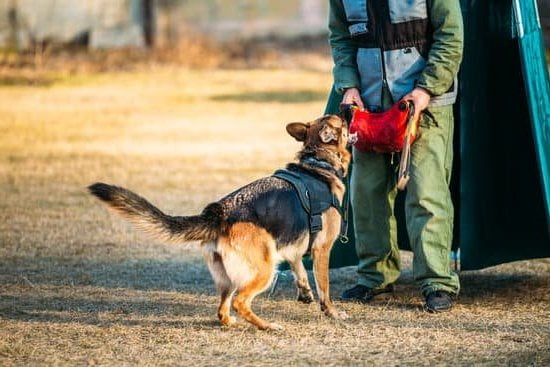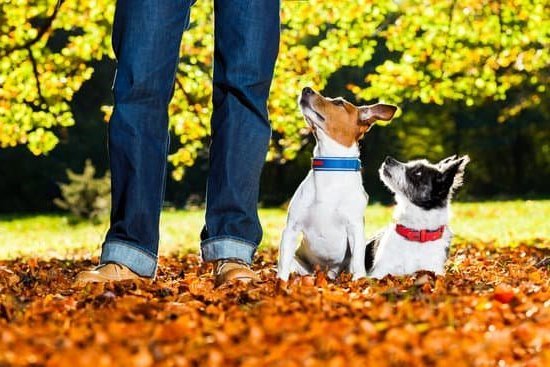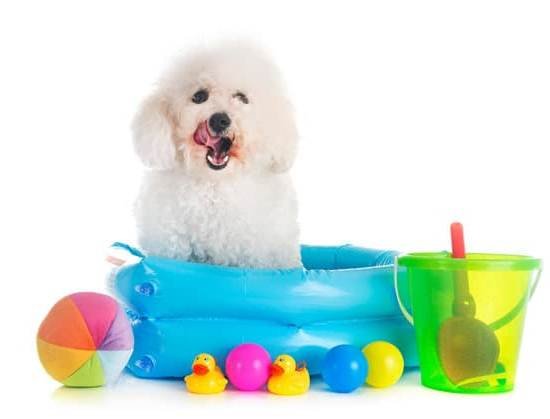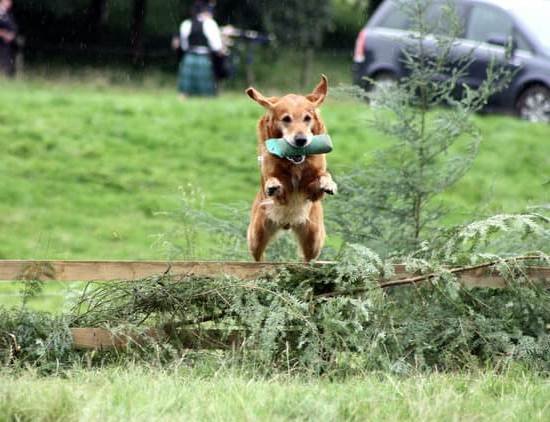House training a dog is an essential part of responsible pet ownership. It not only helps maintain a clean and sanitary living environment but also ensures that the dog understands boundaries and behaviors expected within the household. Understanding a dog’s behavior and instincts is crucial in this process, as it allows for the development of effective training techniques that are tailored to the specific needs of the dog.
Setting up a proper routine for house training is key to success. Consistency and patience are crucial, as well as using positive reinforcement techniques to encourage desired behaviors. Accidents will happen, but knowing how to deal with them and remaining patient through the process is important for both the owner and the dog.
Crate training is a popular method for house training, as it provides a safe space for the dog while also helping with potty training. However, it’s important to avoid common mistakes in house training that may hinder progress. With consistency, persistence, and understanding, transitioning from indoor house training to outdoor training can be achieved effectively. In some cases where difficulties persist, seeking professional help may be necessary for stubborn cases of house training.
Understanding a Dog’s Behavior and Instincts
The Importance of Understanding Your Dog
Before embarking on the journey of house training a dog, it is crucial to have a clear understanding of your furry friend’s behavior and instincts. Dogs are territorial animals, and they tend to establish routines and habits within their living space. They have a natural instinct to keep their den clean, which can be utilized in the process of house training.
Recognizing Signs of Needing to Go
One of the key aspects of understanding a dog’s behavior is being able to recognize signs that indicate they need to relieve themselves. Common signs include pacing, sniffing around, whining, or suddenly leaving the room. By being attentive to these signals, you can proactively take your dog outside or to their designated potty area.
Instinctual Habits That Aid in House Training
Dogs have an innate inclination to follow a routine and seek rewards for positive behavior. Utilizing this knowledge is essential in setting up an effective house training regimen. By tapping into your dog’s natural instincts and behaviors, you can create a structured routine that aligns with their predispositions. This can make the process of house training a dog smoother and more successful.
Understanding a dog’s behavior and instincts plays a pivotal role in the success of house training. By recognizing their natural inclinations, pet owners can tailor their approach to effectively train their dogs while strengthening the bond between them.
Setting Up a Proper Routine for House Training
House training a dog is an essential part of responsible pet ownership. By setting up a proper routine, you can help your dog learn where and when it is appropriate to relieve themselves, minimizing accidents in the house and ensuring a clean and comfortable living environment for both you and your pet.
To establish a successful house training routine, consider implementing the following steps:
- Consistent Feeding Schedule: Dogs thrive on routine, so feeding your dog at the same times each day can help regulate their bathroom schedule. This also makes it easier for you to predict when they will need to go outside.
- Frequent Potty Breaks: Take your dog outside to their designated bathroom spot frequently, especially after meals, naps, playtime, and before bedtime. This helps them associate the outdoor area with going to the bathroom.
- Supervision: Keep a close eye on your dog while indoors, especially during the initial stages of house training. This allows you to recognize signs that they need to go outside and prevents accidents from happening.
By establishing a consistent routine for feeding, potty breaks, and supervision, you can effectively train your dog to understand where they should relieve themselves. Remember that every dog learns at their own pace, so patience and persistence are crucial when house training a dog.
Using Positive Reinforcement Techniques
Positive reinforcement is a crucial aspect of house training a dog. This technique involves rewarding your dog for exhibiting the desired behavior, such as going to the bathroom outside. When your dog successfully follows the house training routine, make sure to praise and reward them with treats or verbal affirmations. This will help your dog understand what behavior is expected from them and encourage them to repeat it in the future.
It’s important to note that positive reinforcement should be immediate and consistent. Your dog needs to associate the reward with the specific action they have performed. For example, if you take your dog outside to go to the bathroom and they do so, make sure to give them a treat or praise immediately after. Consistency in rewarding good behavior will reinforce the house training process and make it more effective.
Another positive reinforcement technique is using a clicker during house training. A clicker is a small device that makes a distinct clicking sound when pressed. You can use the clicker to mark and capture your dog’s good behavior, followed by giving them a treat or praise. This method helps your dog understand exactly when they’ve done something right, making it easier for them to learn how to behave during the house training process.
| Positive Reinforcement Tips | Description |
|---|---|
| Reward Immediately | Offer treats or praise right after your dog displays desired behavior. |
| Consistency | Be consistent in rewarding good behavior to reinforce it. |
| Clicker Training | Use a clicker to mark and capture good behaviors followed by rewards. |
Dealing With Accidents and Patience
Accidents are an inevitable part of the house training process, especially when it comes to puppies or adult dogs who have not been properly trained. It’s important to remember that accidents happen and that patience is key when it comes to successfully house training a dog. Here are some tips for dealing with accidents and maintaining patience during the process:
1. Stay Calm: When you discover an accident in the house, it’s crucial to stay calm. Yelling or punishing your dog will only create fear, anxiety, and confusion, which can actually hinder the house training process.
2. Clean Thoroughly: It’s important to clean up accidents thoroughly using an enzyme-based cleaner specifically designed for pet messes. This will help eliminate any residual odors that may attract your dog back to the same spot.
3. Monitor Closely: Keeping a close eye on your dog, especially during the early stages of house training, can help prevent accidents from happening in the first place. Look out for signs such as circling, sniffing, or squatting, as these may indicate that your dog needs to go outside.
4. Be Patient: House training a dog takes time and requires patience. Every dog learns at their own pace, so it’s important to be patient and consistent with your training methods.
By following these tips and maintaining a patient attitude, you can effectively navigate through accidents and continue with the house training process without getting discouraged. Remember that consistency is key in successfully house training a dog, so stay committed to the process even when accidents occur.
Tips for Crate Training a Dog
Crate training a dog can be an effective and humane way to house train your furry friend. A crate provides a safe and secure space for your dog, mimicking a den-like environment that dogs naturally seek out in the wild. This method not only helps with house training, but it can also prevent destructive behaviors, reduce anxiety, and aid in transportation.
When it comes to crate training your dog, it’s important to choose the right size crate. The crate should be large enough for your dog to stand up, turn around, and lie down comfortably. If the crate is too big, your dog may use one end as a bathroom area, defeating the purpose of the training. Additionally, make sure the crate is comfortable with soft bedding and perhaps some of your dog’s favorite toys.
One of the most crucial aspects of successful crate training is creating positive associations with the crate. You can do this by feeding your dog his meals inside the crate with the door open at first, gradually progressing to closed-door feedings. You can also place treats inside the crate for your dog to discover on his own. Making the crate a pleasant and inviting space will help ease any anxiety or fear associated with being confined.
| Aspect | Description |
|---|---|
| Crating Size | The right size of the crating area is essential for effective house training. |
| Comfortable Crate | Make sure that you provide soft bedding and some toys inside the crate to make it comfortable for them. |
| Creating Positive Associations | By using treats or feeding them inside their crate encourages them to associate positivity when inside their own space. |
Common Mistakes to Avoid in House Training
House training a dog is an essential part of pet ownership, and avoiding common mistakes can make the process much smoother for both the owner and the pet. One of the most common mistakes in house training a dog is not being consistent with the routine. Dogs thrive on consistency, so it’s important to take them out at the same times each day, feed them on a regular schedule, and provide ample opportunities for bathroom breaks.
Another mistake to avoid is punishing your dog for accidents. Punishment can actually set back the house training process and create anxiety or fear in your pet. Instead, focus on using positive reinforcement techniques such as treats, praise, and rewards when your dog successfully goes outside. This will help them understand what behavior is desired and encourage them to repeat it.
It’s also crucial to avoid giving your dog too much freedom too soon. Until your dog has a good grasp on house training, it’s best to limit their access to certain areas of the house. This can be done by using baby gates or closing doors to rooms where accidents are more likely to happen. Gradually expanding their freedom as they become more reliable will help prevent accidents and set them up for success in the long run.
By being aware of these common mistakes and making a conscious effort to avoid them, you can set yourself and your dog up for success in house training. Remember that patience, consistency, and positive reinforcement are key components of this process, and with dedication and understanding, you can effectively teach your dog where it’s appropriate to relieve themselves.
Consistency and Persistence in House Training a Dog
Understanding the Need for Consistency
Consistency is key when it comes to house training a dog. Dogs thrive on routine, and they need to understand what is expected of them in order to learn. This means feeding, walking, and toileting should all happen at the same times each day. When a dog knows what to expect, they are more likely to develop good habits. Consistency also extends to using the same commands and cues each time you take your dog outside to go potty.
The Role of Persistence
Persistence is equally important when house training a dog. It’s natural for dogs to have accidents in the beginning, but it’s crucial not to give up or get frustrated. Patience and persistence are necessary for reinforcing positive behaviors and correcting unwanted ones. By consistently redirecting your dog to the designated potty area and rewarding them when they do their business there, you can help them understand what is expected.
Maintaining Consistency and Persistence
It’s essential that all members of the household, as well as any caregivers or visitors, are on board with maintaining consistency and persistence in house training a dog. Everyone should follow the same routine, use the same commands, and engage in positive reinforcement techniques.
This will prevent confusion for the dog and ensure that they receive consistent guidance as they learn. Additionally, keeping a close eye on your dog during the house training process can help you catch any accidents before they happen, allowing you to redirect them to the appropriate spot for elimination.
How to Transition From House Training to Outdoor Training
Once your dog has become familiar with house training and is consistently using the designated potty area indoors, it’s time to transition to outdoor training. This is an important milestone in your dog’s development and will allow them to understand that going potty is acceptable outside as well. The transition from indoor to outdoor potty training can be a smooth process if done correctly.
To successfully transition from house training to outdoor training, begin by slowly moving the designated potty area closer and closer to the door that leads outside. This gradual shift will help your dog understand that they should go potty in a specific area, but now it’s located outdoors. It’s important to praise and reward your dog every time they use the outdoor area for potty, reinforcing the positive behavior.
Consistency is key during this transition period. Make sure you take your dog outside regularly, especially after meals, playtime, or naps. Use commands such as “go potty” or “do your business” while they are in the designated area so they can associate those words with the action of eliminating waste. Additionally, be patient with your dog during this process as it may take some time for them to fully make the transition from indoor to outdoor potty training.
Seeking Professional Help for Stubborn Cases of House Training
In conclusion, house training a dog can be a challenging process, but with the right understanding of a dog’s behavior and instincts, setting up a proper routine, using positive reinforcement techniques, and being patient and consistent, it is definitely achievable. It’s important to remember that accidents will happen, but dealing with them calmly and using them as learning opportunities for your dog is key.
For some stubborn cases of house training, seeking professional help may be necessary. There is no shame in reaching out to a professional trainer or behaviorist who can provide expert guidance and assistance. They can assess the specific challenges your dog is facing and tailor a plan to address them effectively.
Remember that every dog is unique and may require different approaches to house training. With dedication and persistence, you can successfully house train your furry friend and enjoy a happy, harmonious relationship with them for years to come.
Frequently Asked Questions
How Long Does It Usually Take to House Train a Dog?
The time it takes to house train a dog can vary depending on the breed, age, and individual temperament of the dog. Typically, it can take anywhere from a few weeks to several months for a dog to become reliably house trained.
What Is the Proper Way to House Train a Dog?
The proper way to house train a dog involves establishing a routine for feeding, potty breaks, and exercise. Using positive reinforcement techniques such as praise and treats for going outside, and consistent crate training can also be helpful in teaching the dog where it’s appropriate to do their business.
What Is the Secret to Housetraining Your Puppy?
The secret to housetraining your puppy lies in patience, consistency, and positive reinforcement. It’s important to establish a routine, supervise your puppy closely, and give them plenty of opportunities to go outside. Consistent potty training methods will help your puppy understand where they should go to the bathroom.

Welcome to the blog! I am a professional dog trainer and have been working with dogs for many years. In this blog, I will be discussing various topics related to dog training, including tips, tricks, and advice. I hope you find this information helpful and informative. Thanks for reading!





